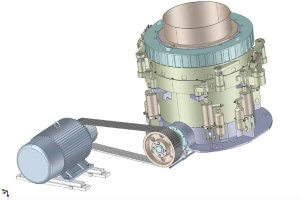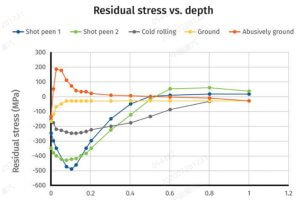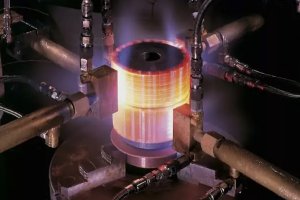Introduction to CNC Machining and Titanium Grades
CNC Machining, short for Computer Numerical Control machining, is a manufacturing process which employs computerized controls to manipulate different types of machinery such as mills, lathes, grinders, and routers. This advanced technology enables precise control over complex cuts needed in the production of components made from various materials – one of them being titanium.
Titanium used in this field typically falls into two grades: Grade 5 and Grade 23. Grade 5, also known as Ti6Al4V, exhibits high strength, lightweight stature, good formability and potentially superior corrosion resistance. Meanwhile, Grade 23, or Ti6AL4V ELI (Extra Low Interstitial), has similar traits but with improved ductility and fracture toughness, making it especially beneficial for medical implant applications.
- Grade 5: High Strength, Lightweight, Good Formability, Superior Corrosion Resistance
- Grade 23: Improved Ductility, Fracture Toughness, Suitable for Medical Implants
This debate between the utilization of Titanium Grade 5 vs. Grade 23 largely depends on the specific requirements of individual projects.
Titanium Grade 5 Overview
In simple terms, Titanium Grade 5 is a popular selection in CNC machining because of its unmatched characteristics. It’s a blend of titanium alloyed with aluminium (6%) and vanadium (4%), making it remarkably resilient yet lightweight. In addition to these two predominant elements, it contains traces of iron and oxygen that aid in enhancing the material’s strength. This mix furnishes Titanium Grade 5 with superior capabilities such as excellent fatigue resistance, good formability, and high corrosion resistance.
These remarkable features make Titanium Grade 5 prevalent in CNC machining processes. It gives leeway for precision manufacturing while not compromising on durability hence assuring longevity in product performance. Equally important is its ability to withstand extreme temperatures , adding versatility to its applications.
This can be witnessed in how proficiently it performs in aerospace industries where both weight and resilience are paramount considerations. For instance, components like jet engine compressor blades and rocket propulsion systems extensively utilize Titanium Grade 5 for their manufacture due to its durability and lightness.
Introduction to Titanium Grade 23
Titanium Grade 23, also known as Ti-6Al-4V ELI (Extra Low Interstitial), represents a refined version of the more popular Titanium Grade 5. The composition of this grade notably varies from its counterpart; it exhibits lower amounts of iron and oxygen that result in enhanced ductility and fracture toughness without compromising strength or corrosion resistance. This equips Titanium Grade 23 with superior biomechanical properties, making it favourable for precision-demanding CNC machining applications.
- Difference in Composition: While both titanium grades contain similar alloying elements – aluminum and vanadium, with the remaining composition being titanium, the distinguishing factor lies in their interstitial element content, primarily iron and oxygen. Titanium Grade 23 has lesser quantities of these elements compared to Grade 5, resulting in improved mechanical properties like increased toughness and fracture-resistance.
- Usage in CNC Machining: These favorable attributes of Grade 23 – better ductility and fatigue strength make it an ideal choice for producing complex parts in CNC machining, where precise control over material behavior is vital.
- Project Example: A typical example of this grade’s utilization can be seen in medical implant devices such as dental implants and orthopedic joint replacements, where the requirements for high strength, low modulus, excellent corrosion resistance, and biocompatibility are paramount.
Comparing the Physical Properties of Titanium Grade 5 and Grade 23
When comparing the physical properties of titanium grade 5 and grade 23, it’s important to consider factors such as tensile strength, yield strength, hardness, and density. Both grades exhibit excellent strength-to-density ratios, making them suitable for high-performance applications in aerospace, medical, and automotive industries.
Cost-Effectiveness Analysis of Titanium Grade 5 and Grade 23 in CNC Machining
Titanium-grade 5 and grade 23 are both widely utilized forms of titanium, especially in CNC machining; however, their cost-effectiveness significantly varies. Titanium Grade 5 offers a compelling balance between performance and cost. It is renowned for its robust strength, high corrosion resistance, and excellent heat resistance – features that make it an ideal choice for many machining projects like aerospace components, automotive parts, or marine equipment. However, these outstanding qualities come at a more elevated price compared to other types of titanium.
- Titanium Grade 5: Exemplary blend of toughness, corrosion resistance, and heat tolerance.
- Titanium Grade 23: Exhibits even greater strength-to-weight ratio and superior biocompatibility than Titanium grade 5.
In contrast, Titanium Grade 23 has emerged as one of the top choices for medical applications due to its superlative biocompatibility feature. Despite fetching a higher price tag than grade 5, titanium 23 shines with its unbeatable strength and superior corrosion resistance suitable for intricate designs and demanding applications. Thus, effective decision making on which grade to use depends largely on project needs—Grade 5 works best when optimal physical properties are desired while Grade 23 proves cost-effective for detailed designs in highly corrosive environments or biomedical use. Therefore, considering the requirements and objectives of a specific project before choosing between the two grades can result in significant cost savings.
Addressing Common Misconceptions Regarding Titanium Grade 5 and Grade 23
In the realm of CNC machining, common misconceptions often arise concerning both Grade 5 and Grade 23 titanium. One prevalent misunderstanding is that Grade 5 is considerably tougher than Grade 23. In reality, while Grade 5 does exhibit greater toughness, they are closely matched in tensile strength – with Grade 5 offering around 950 MPa while Grade 23 offers approximately 860 MPa. Another misconception is regarding their corrosion resistance, where a significant number think Grade 23 is more corrosive-resistant than Grade 5 when in fact both grades possess virtually identical anti-corrosion attributes.
- Grade 5: Around 950MPa
- Grade 23: Approximately 860 MPa
This data shows clear factual debunking these misconceptions and emphasizes the importance of considering individual project requirements before choosing between these two grades.
Application of Titanium Grade 5 and Grade 23 in CNC Machining
In the sphere of CNC machining, both titanium Grade 5 (Ti6Al4V) and titanium Grade 23 (Ti6Al4V ELI – Extra Low Interstitial) hold significant roles due to their unique properties. They are harnessed for a broad range of applications depending on specific requirements.
- Titanium Grade 5: Known for its exceptional strength and outstanding corrosion resistance, it’s primarily applied in automotive components, surgical implants, aircraft structures, and chemical processing units. However, its machinability is lower compared to Grade 23 which can result in slower feed rates and inferior surface finish.
- Titanium Grade 23: This grade offers similar strengths as Grade 5 but distinguished by its higher purity level. It provides superior biocompatibility, making it an excellent choice for medical device applications such as orthopedic pins and dental roots. Its enhanced ductility also allows better performance in intricate designs that may suffer stress concentrations.
Therefore, when choosing between Titanium Grade 5 and Grade 23, careful consideration should be given based on the application demands. While one may outstrip the other in certain scenarios, each holds distinct advantages that enable them to perform optimally across diverse segments.
Other Articles You Might Enjoy
- Understanding Bead Blasting in CNC Machining(tin coating Aldrich)
Bead blasting, an integral process within the world of Computer Numerical Control (CNC) machining, is a fascinating technique that provides a distinct finish to manufactured parts. This process escalates the…
- Innovative CNC Machining for Advanced Spacecraft Components
Introduction: CNC Machining and its role in Spacecraft Components Computer Numerical Control (CNC) machining has, over the years, proven to be one of the most integral pillars within manufacturing industries.…
- Ceramic Tooling in CNC Machining: Breaking the Myths About Durability and Performance?
CNC Machining and Ceramic Tooling: Busting the Myths Computer Numerical Control (CNC) machining is an advanced method of manufacturing where pre-programmed software controls the movement of factory machinery, giving intricate…









